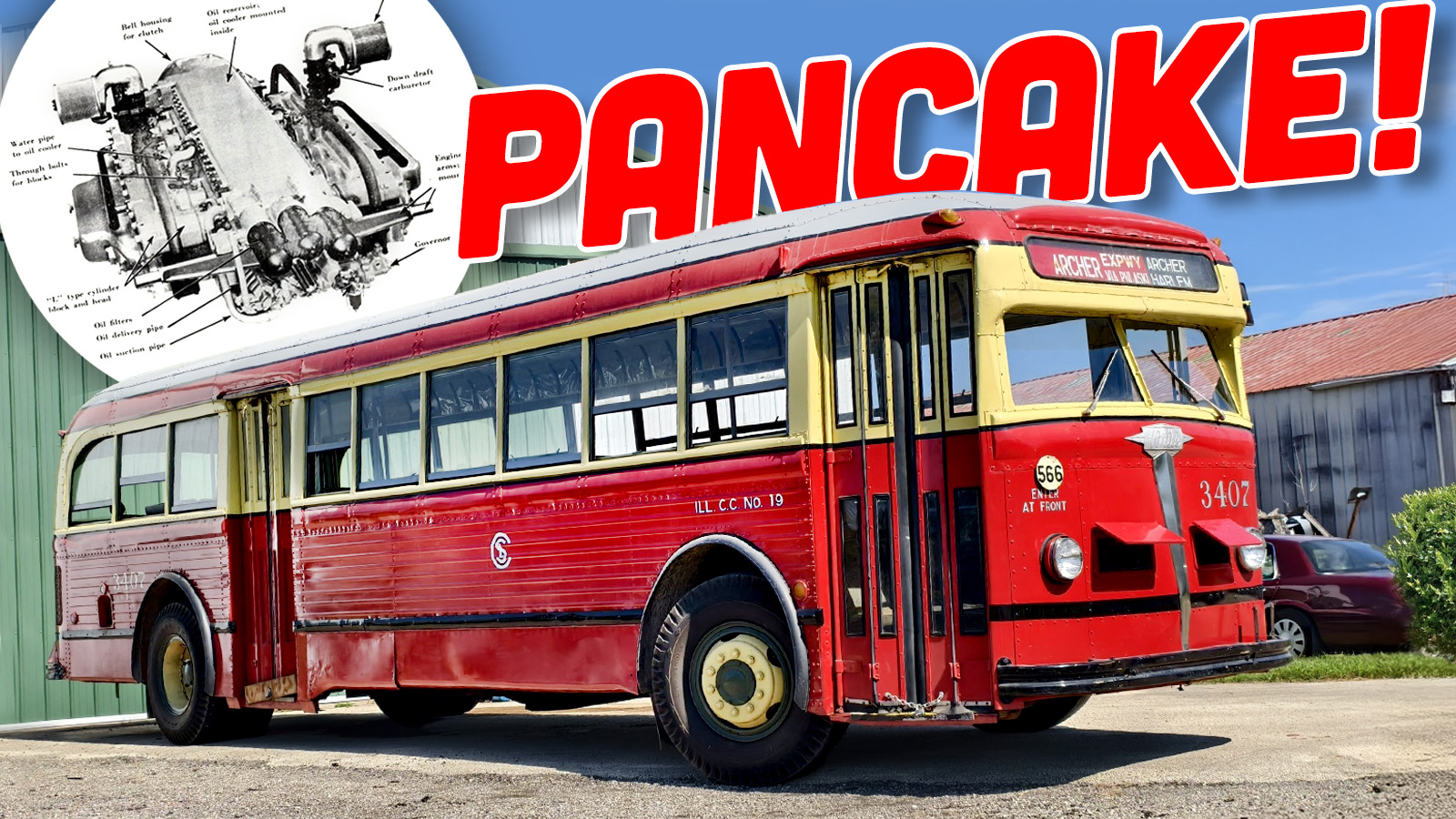Some of the most iconic buses in American history were marvels of engineering built at the peak of when public transportation was both functional and beautiful. Buses like the GMC New Look and the Flxible Clipper get all of the attention, but I recently discovered a bus that’s deeply underrated: the 1944 White Model 798 city bus, Chicago Surface Lines 3407. This World War II-era bus is an amazing example of doing a lot with a little, and it’s made even better by its 12-cylinder ‘pancake’ engine, which sounds like nothing else.
I got to ride Chicago Surface Lines 3407 last weekend during the Illinois Railway Museum’s 10th annual Bus Day. While the Illinois Railway Museum is known best for its rockstar cast of historic rail equipment, it also has around 40 buses, more than a dozen of which are motor buses with gasoline or diesel engines. The rest are electric trolley buses. IRM’s bus collection spans more than a century of time, and a shocking chunk of the rare buses still run and drive. The museum prides itself on being the only museum in America with regular trolley bus operation. IRM has not just the bus legends, but also a handful of buses that don’t exist anywhere in the world.
![]()
The museum’s 1944 White Model 798 is not the only one of its kind, nor is it really a legend. But I think it’s a deeply underrated and beautiful machine. It’s not so much beautiful in the sense of aesthetics, but gorgeous in how it so excellently makes the most with the least, as was the standard during World War II.
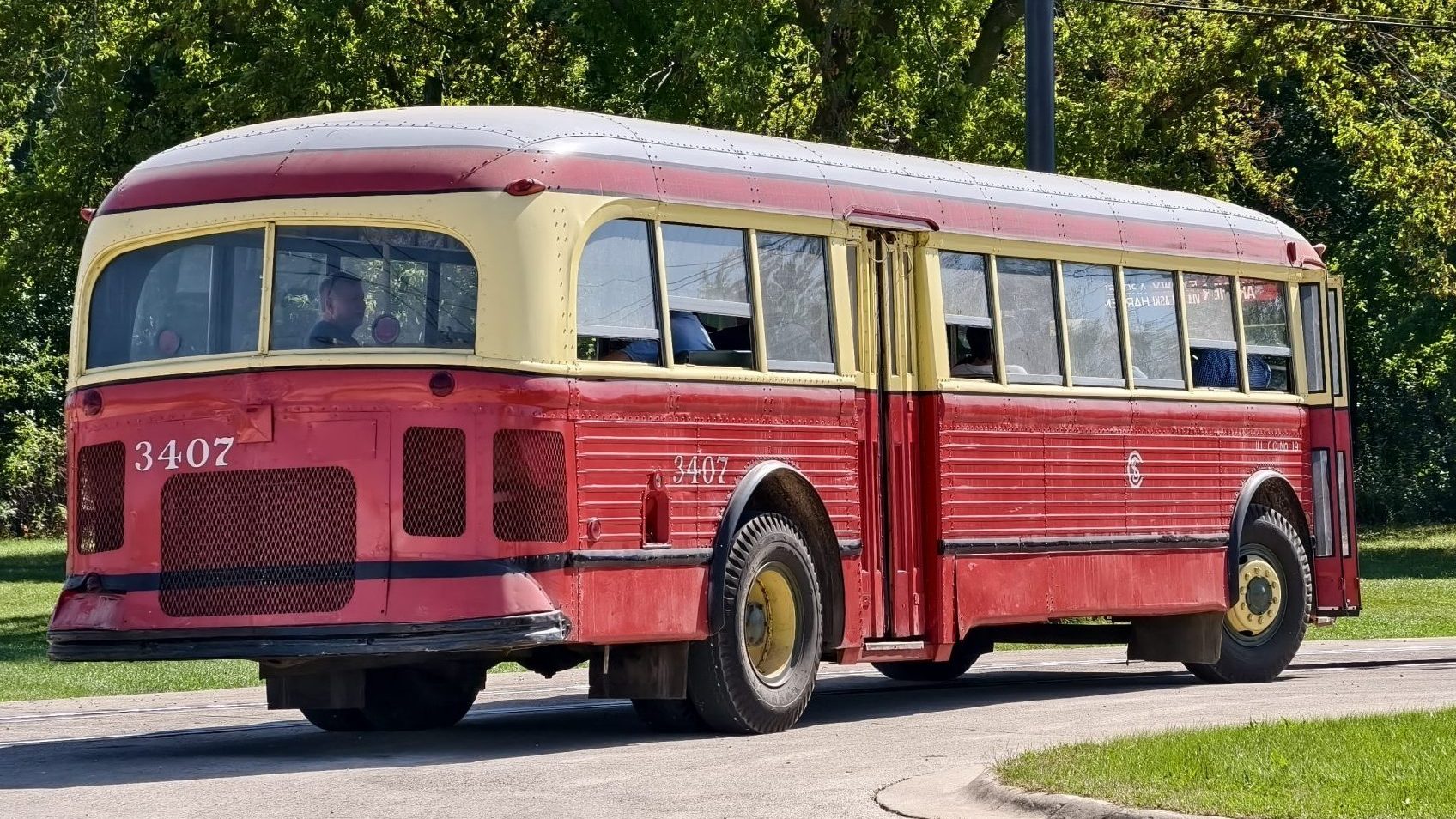 Mercedes Streeter
Mercedes Streeter
The War Effort
World War II changed manufacturing in America. Our nation sent around 806,000 heavy-duty trucks, 310,000 planes, 124,000 ships, and 100,000 armored vehicles to fight. Harley-Davidson alone produced more than 90,000 motorcycles for the war effort. That’s just the tip of the iceberg of war production, which included 41,000,000,000 rounds of ammunition. Tons of raw material and incredible amounts of labor were required to crank out this many vehicles so quickly.
During the war, production of many non-essential items for civilian use was halted and most materials were fed into the war effort. As the National World War II Museum writes, Ford built 691,455 cars in 1941. Then Ford built only around 160,000 more cars in 1942 before it shut down non-military production lines. The U.S. government then rationed off whatever cars were unsold. To be eligible to buy a new car, you usually had to be in an essential role like a doctor, firefighter, or farmer, and had to have an older car with more than 40,000 miles.
This rationing went to the extreme. Household name automakers like Packard and General Motors became less known for cars, but for their aircraft engines, tanks, guns, and military trucks. At the peak of war production, PBS writes, Ford built a B-24 Liberator every 63 minutes.
RV companies and bus makers largely shut down their civilian production lines to help win the fight, and what vehicles they did produce were built with as few materials as possible. That’s where the White Model 798 comes in.
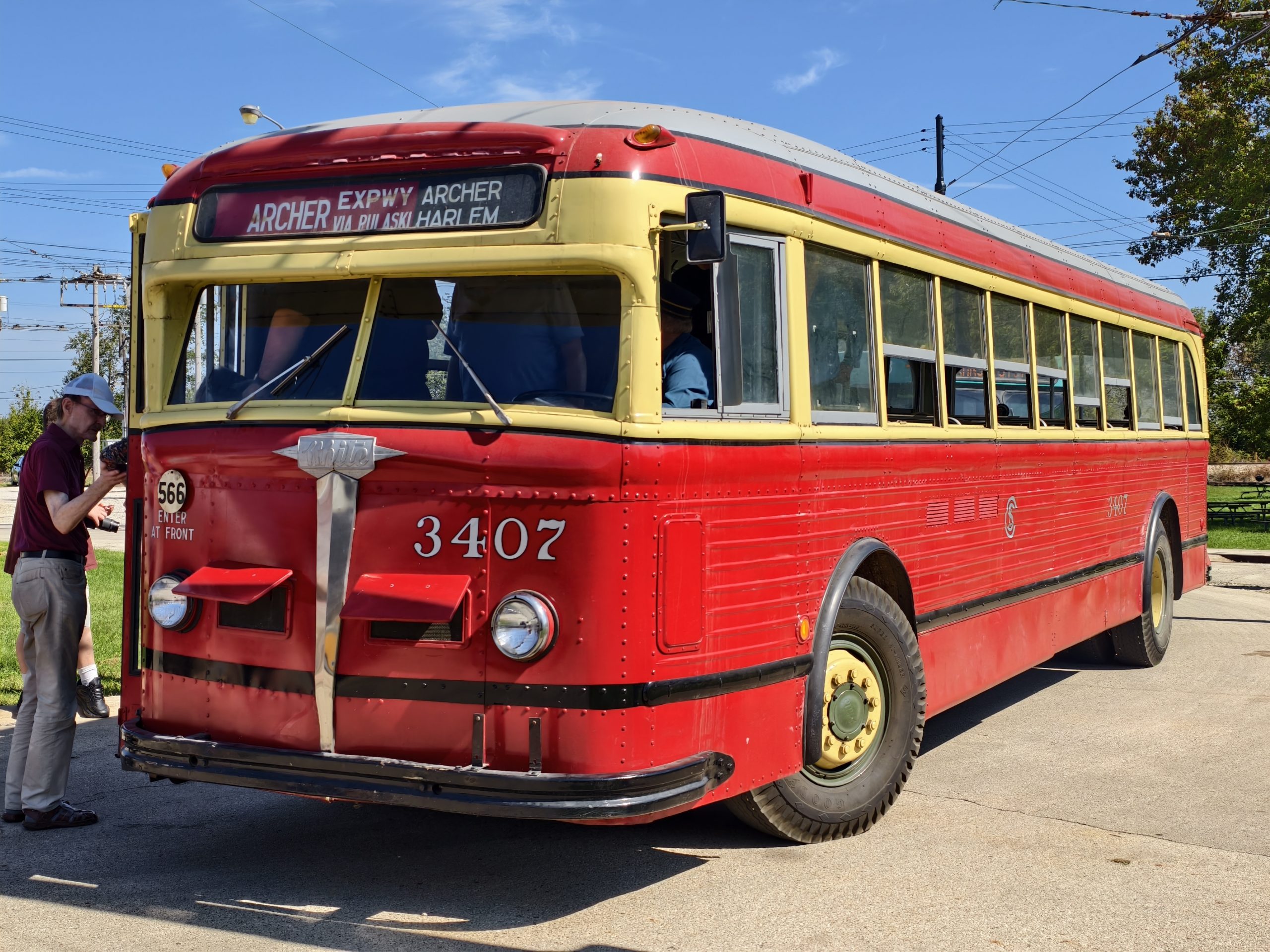 Mercedes Streeter
Mercedes Streeter
White Buses
The White Motor Company of Cleveland, Ohio, was founded in 1900 as an offshoot of the White Sewing Machine Company, which was founded in 1876. The company’s first vehicle was a steam car, and it would later expand into trucks and buses. White’s buses are perhaps best known for being the tour vehicles of choice of the Yellowstone Park Transportation Company and later, the Yellowstone National Park.
In 1917, Yellowstone placed an order for 50 buses from White, and many of those buses had actually been built in 1915 and 1916. The most famous of the Yellowstone buses are its White 706s from the 1930s, which were also affectionately known as the ‘Red Jammers’ when painted red for use in Glacier National Park. I have written about these legends before:
Hemmings writes that Ford, REO, GMC, and White were challenged to build a bus that could survive the rough roads while safely carrying passengers. White won out above the rest with a bus that performed the best. The White 706 wasn’t a particularly hot truck. You were looking at a 318 cubic inch 16A flathead inline six-cylinder engine made just 94 horses, or about the output of my smaller 1948 Plymouth Special DeLuxe. However, the White made good use of all of those horses in its gearing. A White 706 could confidently climb through Glacier and other parks at a leisurely speed of 20 mph. That’s not to say the buses could go much faster, as they were geared for a top speed of 35 mph.
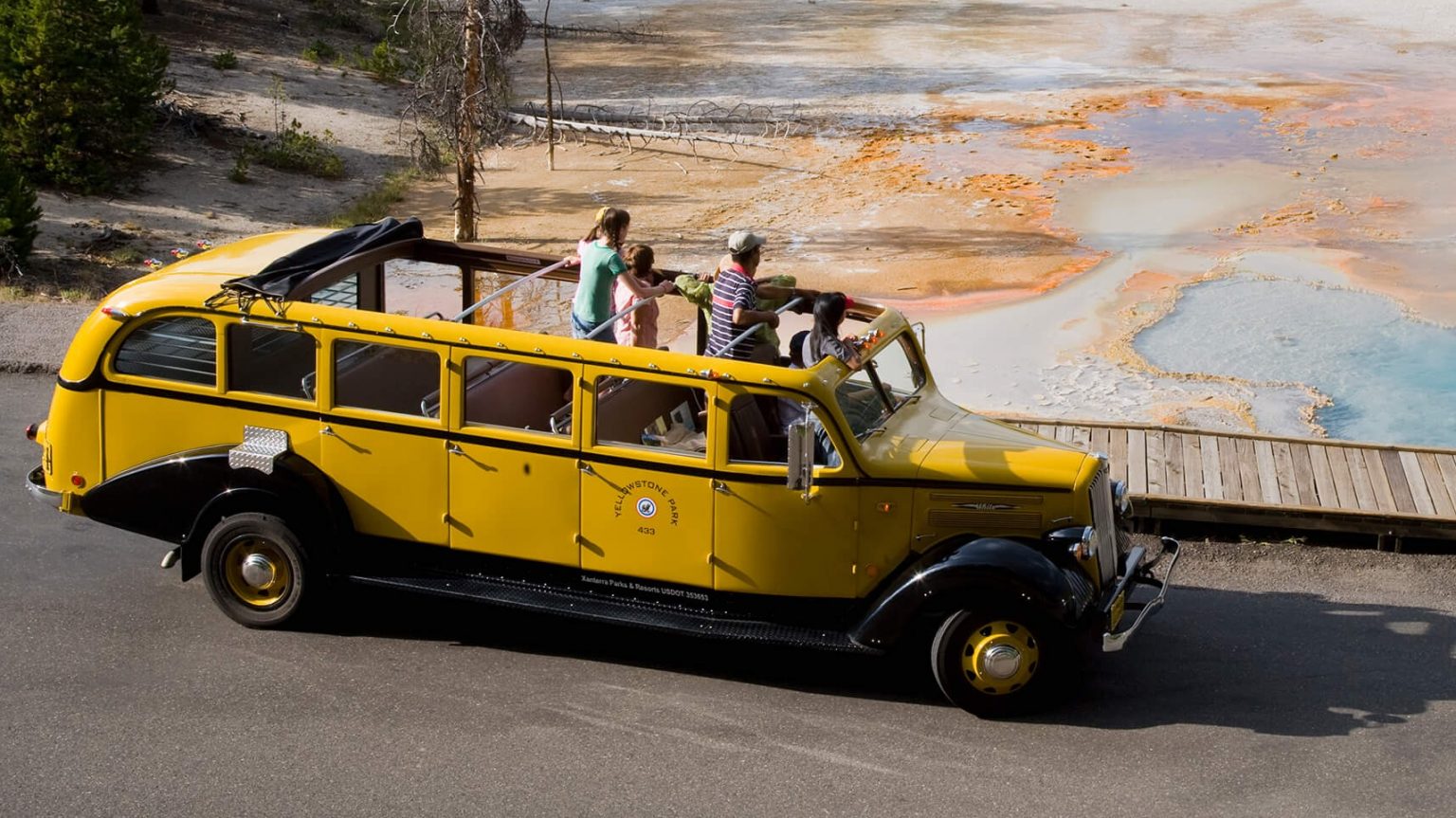 Xanterra Parks and Resorts
Xanterra Parks and Resorts
The gorgeous design of the 706 buses is attributed to Count Alexis de Sakhnoffsky, White President F.W. Black, and Herman Bender of the Bender Body Company. The front end was styled by de Sakhnoffsky while everything else was handled by Bender. The buses had a roll-back top for open viewing and up to five passenger doors on the right side.
In addition to the funky door situation, the buses were built with oak wood frames to support their bodies. The parks also painted their buses their own colors, with Yellowstone going with yellow and Glacier choosing red after the mountain ash berries found in the park.
The 700 Series
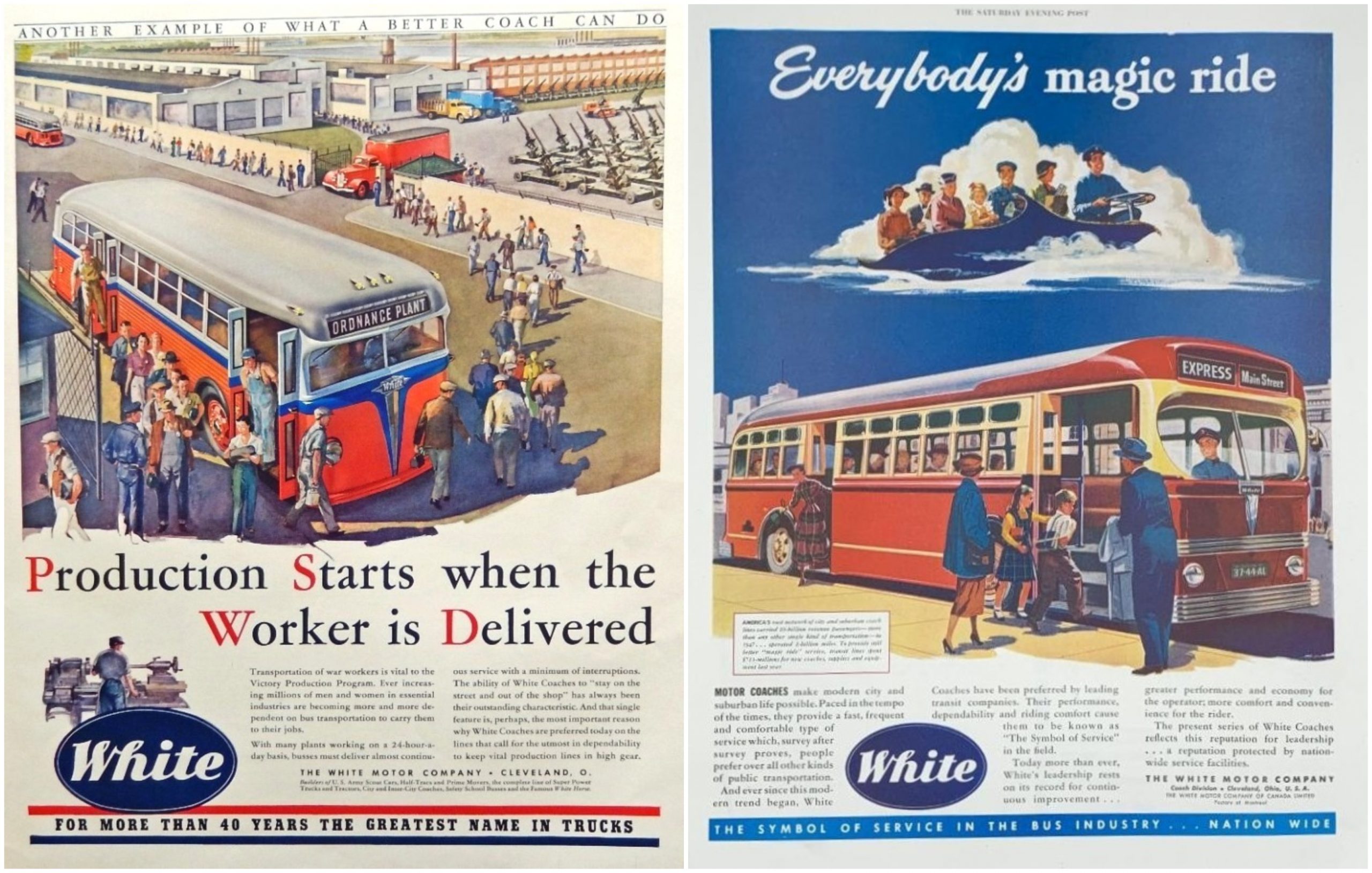 Via eBay
Via eBay
In 1937, White introduced its next-generation city bus, the 700 series. At the time, White boasted about the 700’s advanced features of the day, primarily its total aluminum alloy and high-tensile steel body. White also said that the bus had a single-level floor, a low center of gravity, and an integrated chassis and body for strength. The shorter bus of the 700 series was the 30-foot 748, and the longer model was the 35-foot 798, which launched in 1940. Some White documentation calls this bus the “Model 798,” while other documentation just calls it the 798. The 798 carried 45 passengers. White also sold the 33-foot 788, which had room for 38 passengers, in addition to other models. All of these buses were 96 inches wide.
The coolest part of the bus, I think, is what’s under the skin. Located in the middle of the bus and under the floor is a chunky 464 cubic-inch horizontally-opposed 12-cylinder engine. This mill was good for 165 HP, and the bus was geared for city driving a top speed of around 45 mph to 50 mph. As a result, the 700 series was considered a little bit of a hot rod back in its day. Other variants of White’s ‘Pancake’ 12-cylinder engine were noted to have 210 HP or 225 HP.
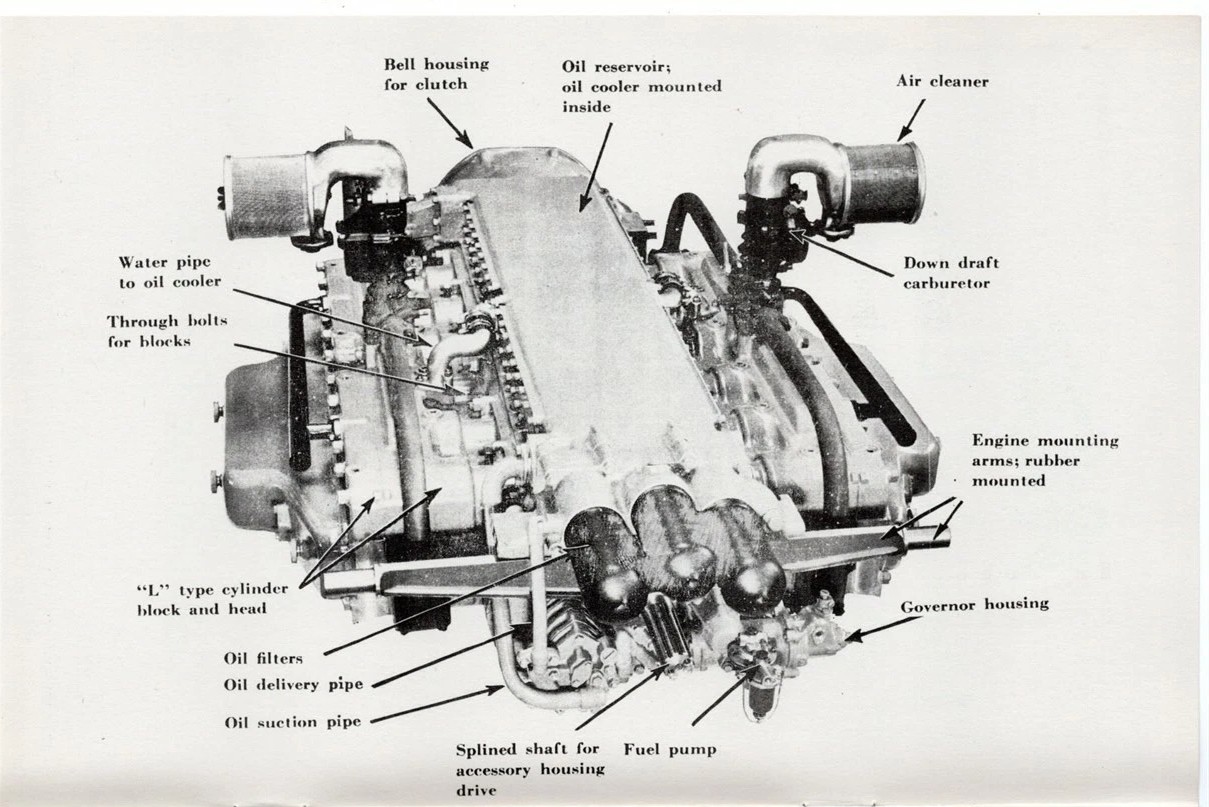 White Motor Company via eBay
White Motor Company via eBay
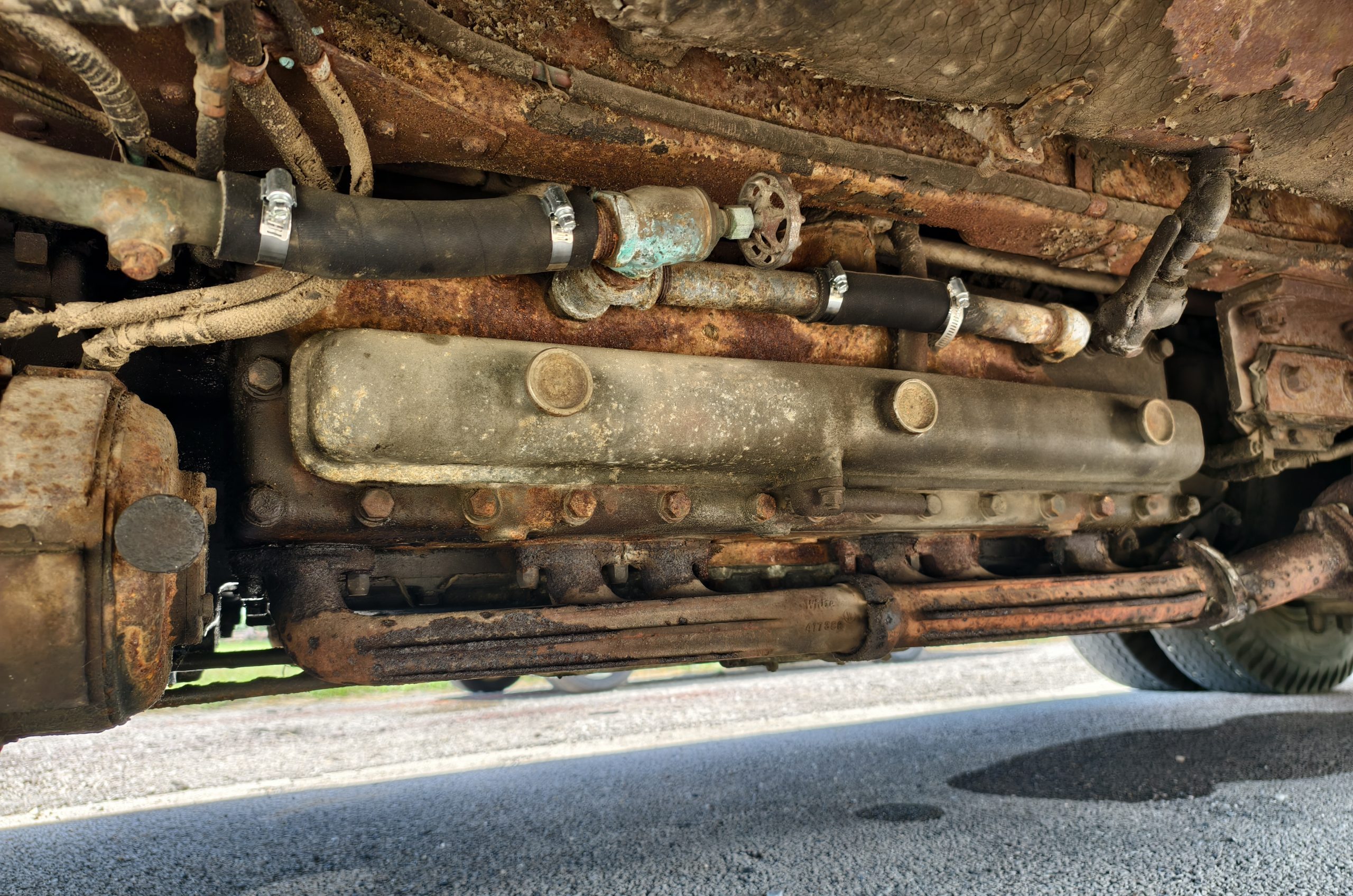 Mercedes Streeter
Mercedes Streeter
 Mercedes Streeter
Mercedes Streeter
As for why White went with this route, a brochure from White claims that by putting a flat engine under the floor, it’s able to maximize the entire length of the bus body for passengers.
The 798 would go on to be a success and was scooped up by transit authorities all over North America, from New York to California. One of the operators of White Model 798 buses was the Chicago Surface Lines, which was the city’s street railway system operator in the first half of the 20th century.
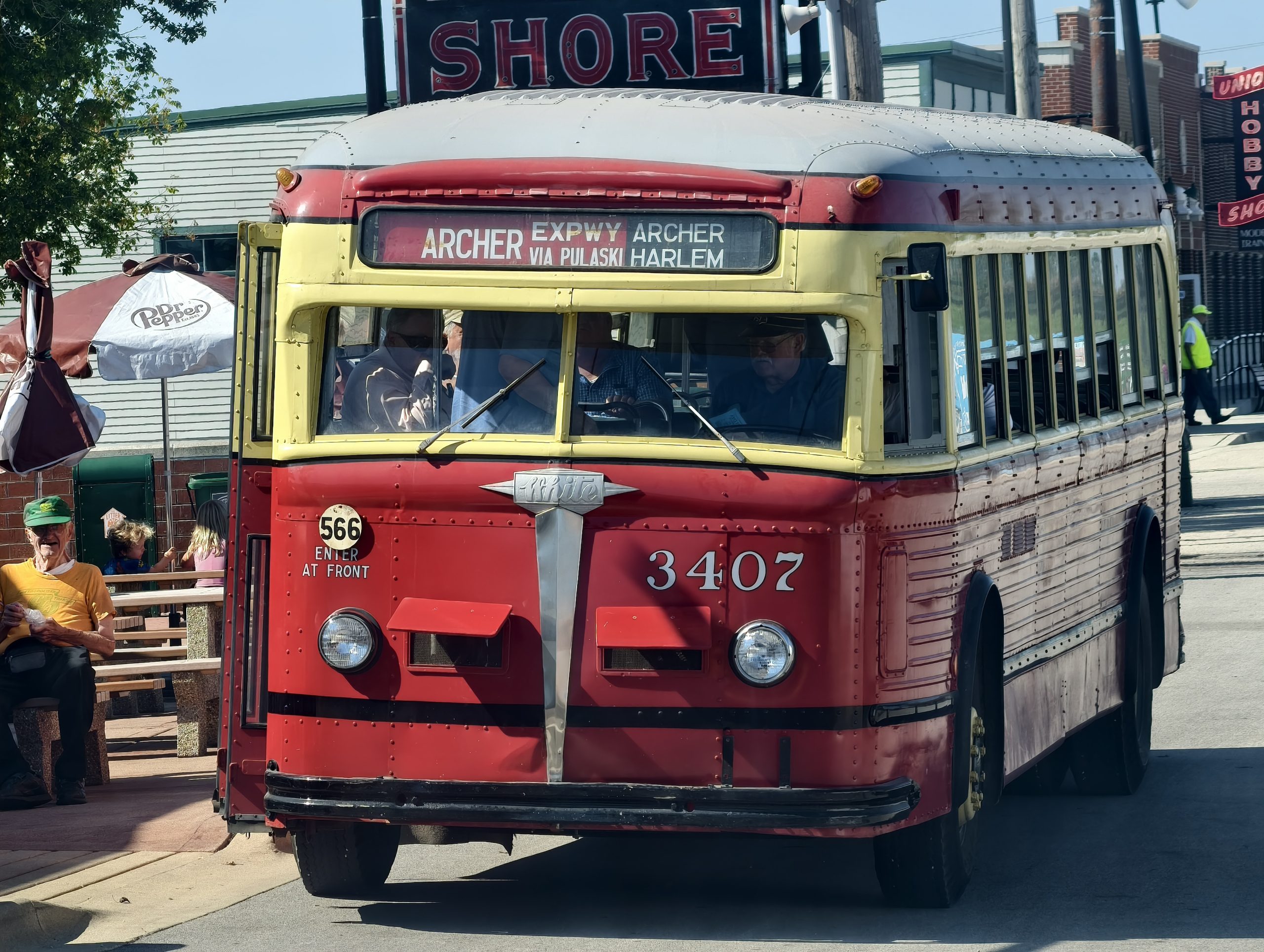 Mercedes Streeter
Mercedes Streeter
The White 798 got caught up in the war rationing effort, and the Illinois Railway Museum explains what happened next:
During World War II, bus manufacture was restricted by the War Production Board. The Office of Defense Transportation allocated the limited number of buses that were produced, to the cities that needed them the most. The Chicago Surface Lines placed an order for 297 buses with the White Motor Co. of Cleveland, Ohio, and was allocated twenty buses during 1944. The remainder of the order would wait until after the war, and delivery of the final buses took until 1948. All buses produced under ODT allocation were painted gray, to save time and labor. In addition, metal conservation restrictions for the war effort did not permit the use of chrome plating, so the seat frames and stanchions are made of enameled steel. Note the fluted sides; this corrugation stiffened the steel, so that it could be made thinner to conserve metal.
In order to get faster delivery, CSL bought the first portion of the order with three-speed manual transmissions; the last two-thirds had automatic (hydraulic) transmissions. […]
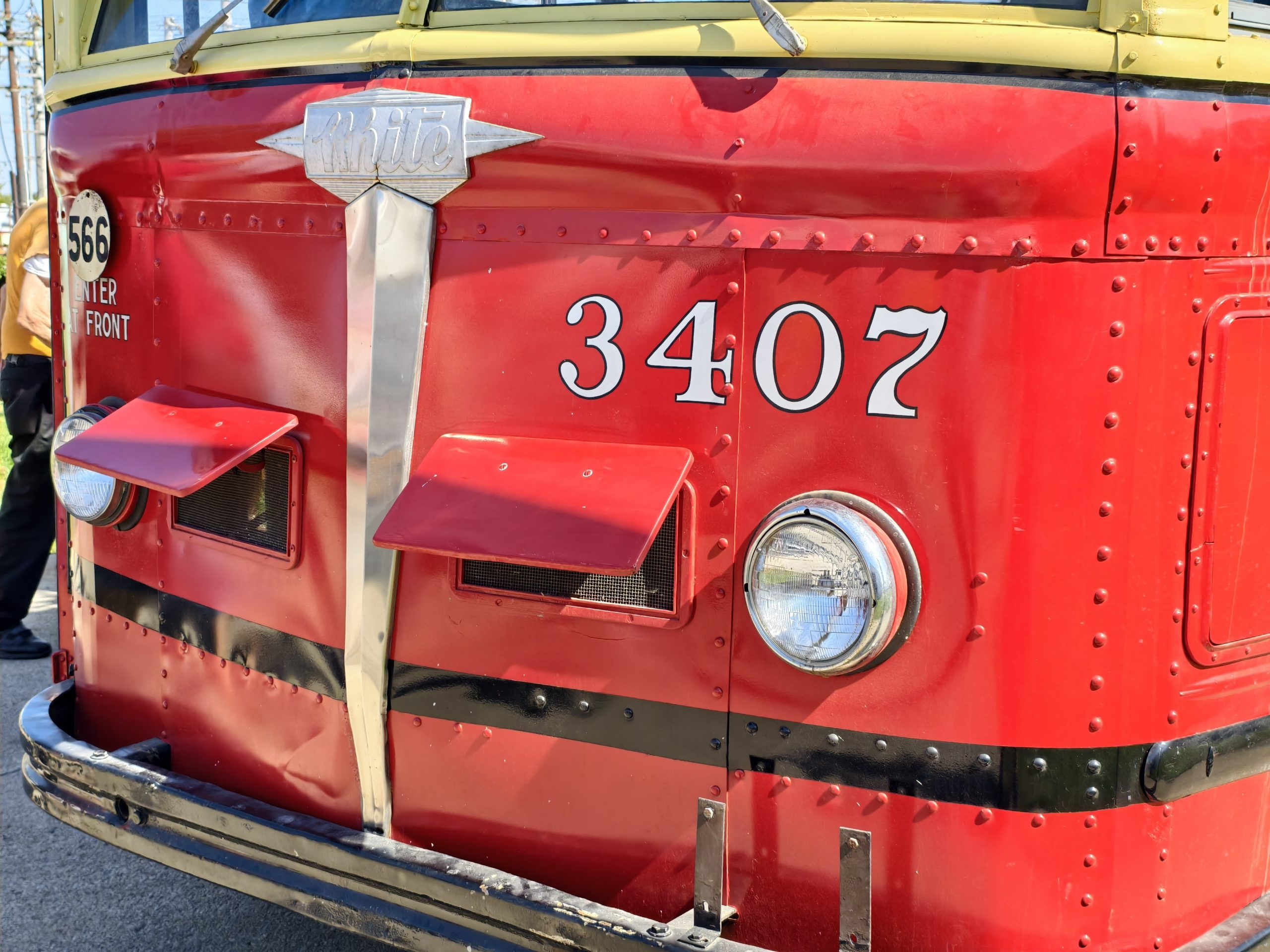 Mercedes Streeter
Mercedes Streeter
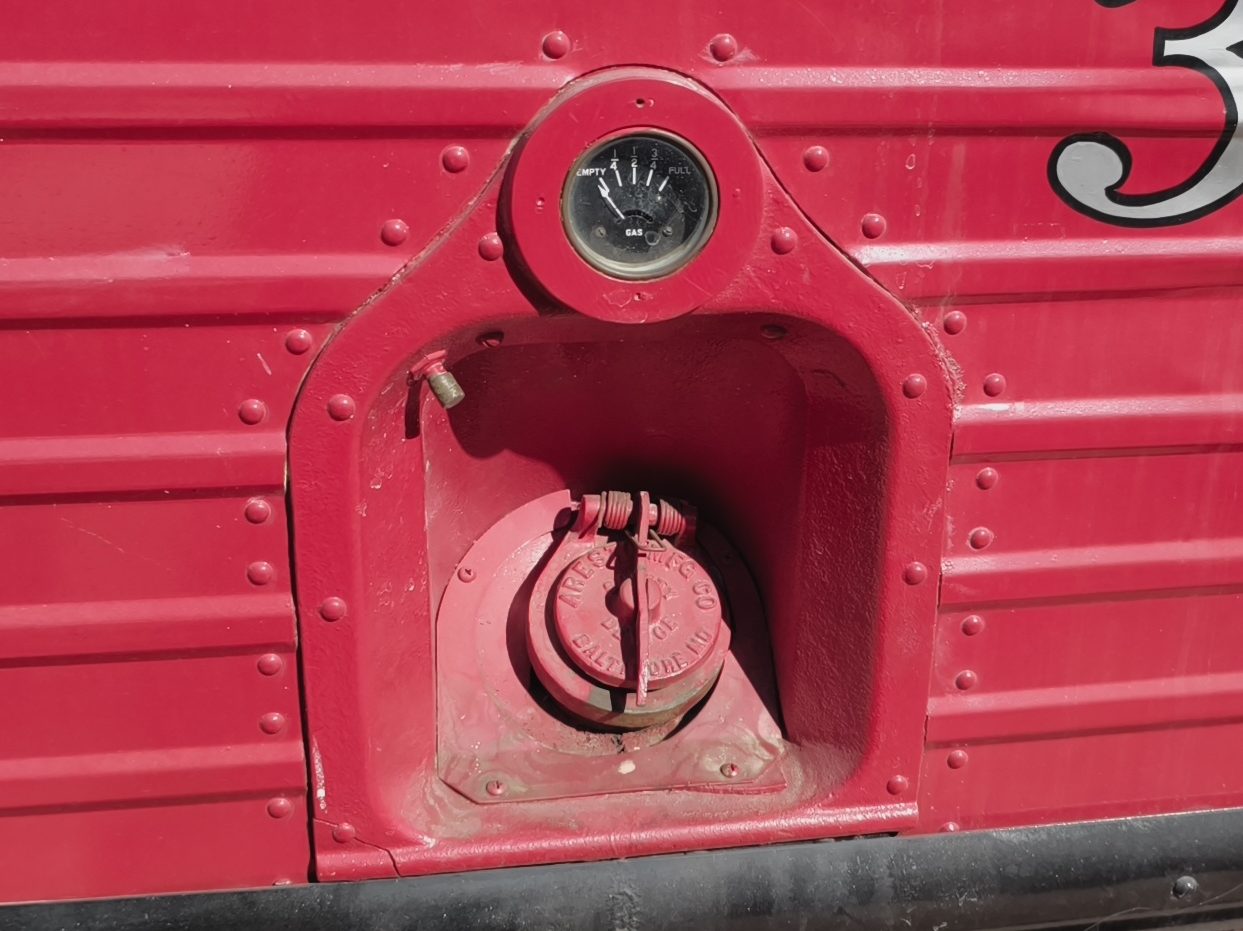 Mercedes Streeter
Mercedes Streeter
Bus 3407 was mostly used on the Archer Express route and was based at Archer Garage. It was retired from revenue service earlier than its sister buses, in 1955, and became training bus BT-2. It served in this new role until 1974, when it was put aside as part of a historical fleet. It was refurbished in 1981 and used mostly for ceremonial and public relations purposes. IRM acquired it in 1986.
1940s Glory, 81 Years Later
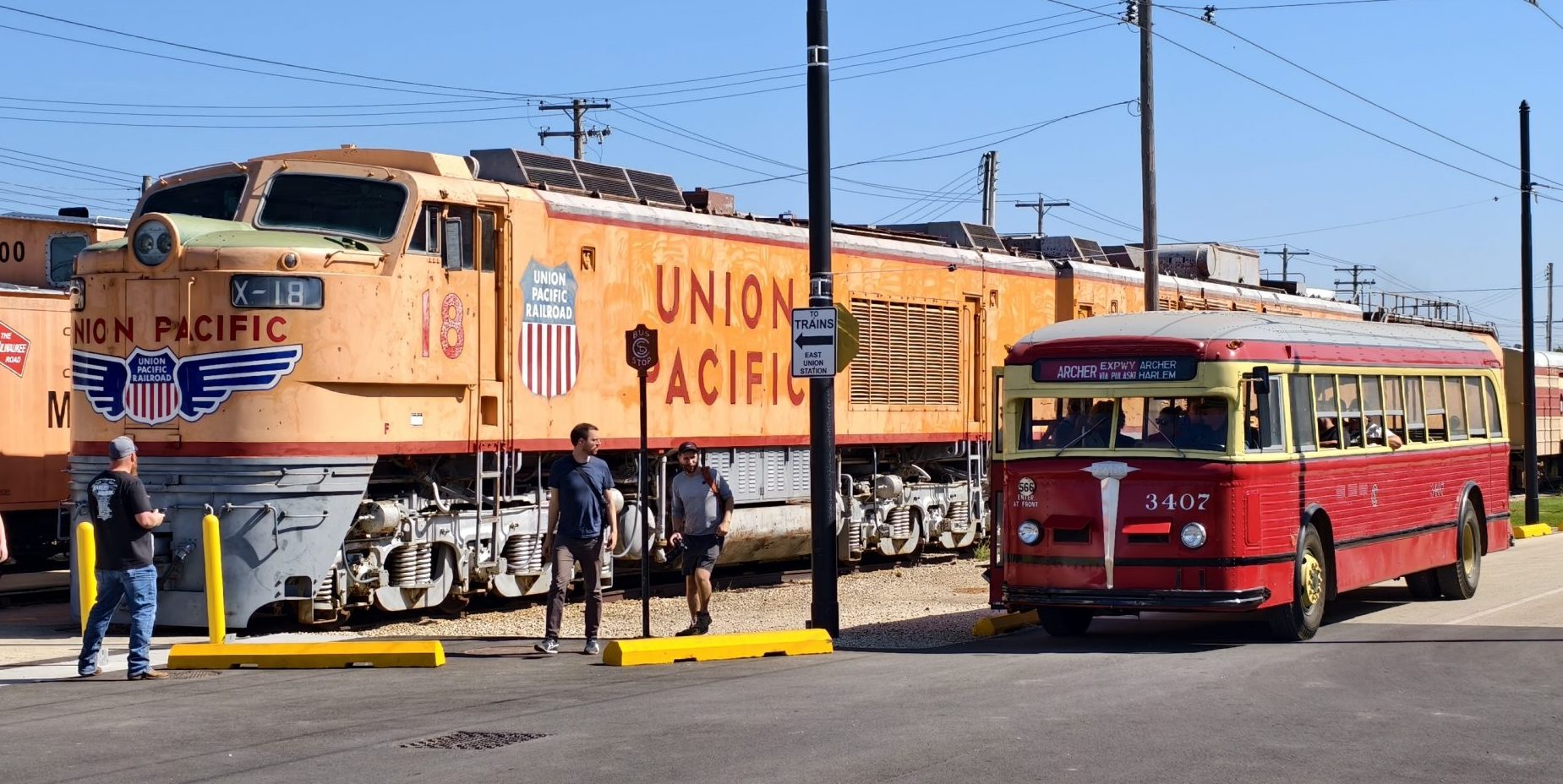 Mercedes Streeter
Mercedes Streeter
Chicago Surface Lines 3407 hasn’t run in at least 15 years, but a volunteer at IRM’s bus department made it his mission to get the old bus running again. He cleaned up the fuel system, powered through destroyed wiring, and cleaned up enough rust that the bus was able to take its first ride in so many years. Chicago Surface Lines 3407 is not in perfect shape; there’s still lots of rust to repair, wiring to run, and the rear axle is so poorly aligned that the bus has a terrible crabbing issue. But it ran good enough to run at Bus Day, and that’s where I found it.
What blew me away about this bus was how beautiful it was in its simplicity. It’s not adorned in pounds of flashy chrome, and the interior has little in the way of flair. The only real bit of spice is the windshield, which is angled inward to reduce glare. Otherwise, this bus is all business, from that long shifter and no-nonsense dashboard to the lack of any real creature comforts.
 Mercedes Streeter
Mercedes Streeter
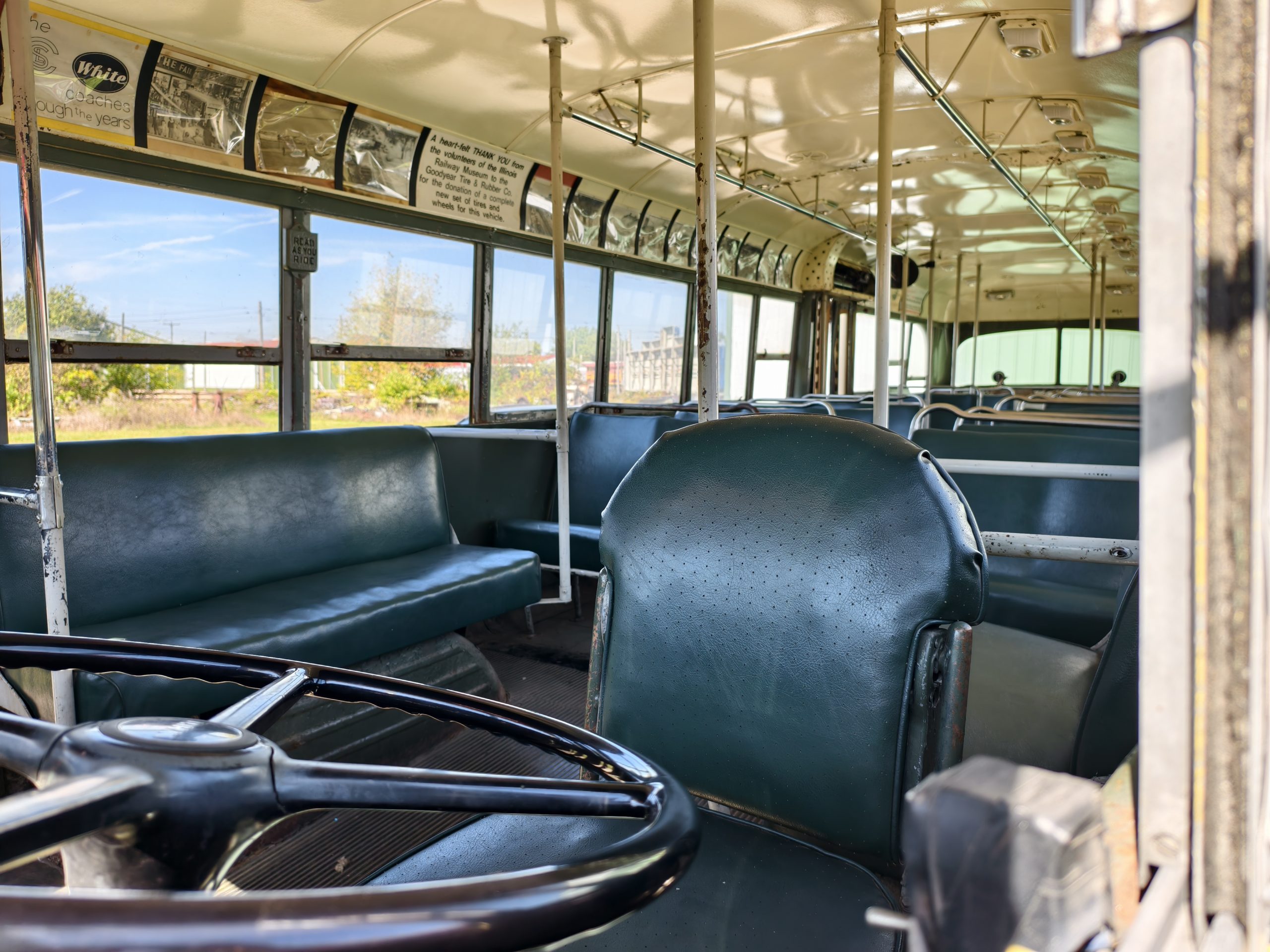 Mercedes Streeter
Mercedes Streeter
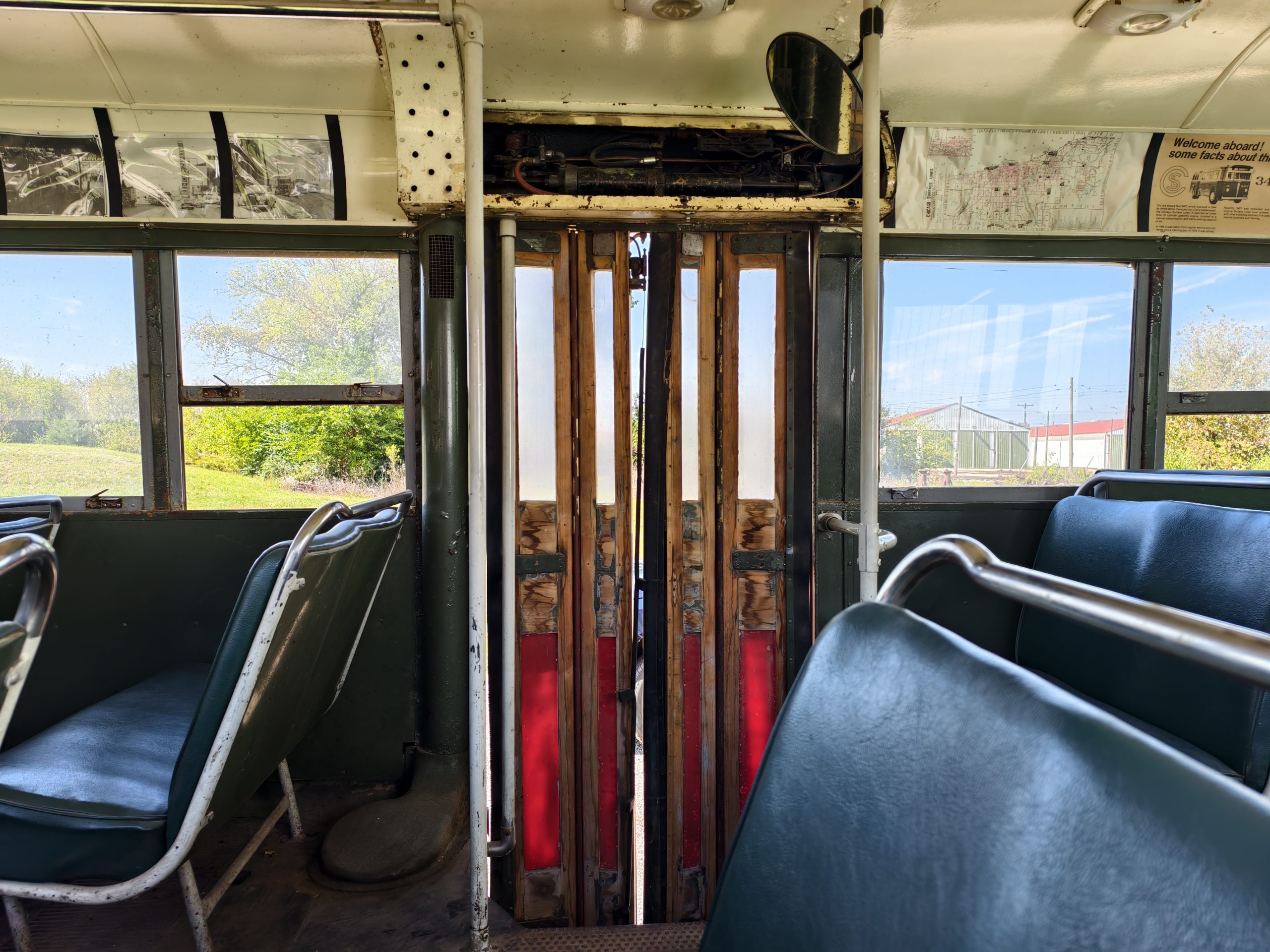 Mercedes Streeter
Mercedes Streeter
It was also fascinating looking at just how thin the metal was. The driver of the bus joked about how there was basically nothing in front of his legs, and crash safety wasn’t at all a concern. Indeed, the metal seemed so thin that you sneeze on it the wrong way and it would dent.
The highlight was that engine for sure. Despite the engine’s advanced age, it kicked off from a dead stop with a surprising push, and while the driver at IRM was not allowed to drive particularly fast, the bus did go just fast enough to listen to the music of that flat twelve. The engine had that distinctive boxer engine note, but in the modern day, it’s rare to find a vehicle with a flat engine that has more than six cylinders. Doubling that makes for some of the greatest sound I’ve ever heard coming from a gasoline engine. Just listen to this:
Also, watch this video. Start at around the 10-minute mark if it doesn’t already load there:
That pancake engine might now be one of my favorite gasoline engines of all time. Certainly, I loved riding both the White 798 and IRM’s GMC RTS-II as much as I could. I mean, how often do you get the chance to ride in equipment powered by a Detroit Diesel two-cycle diesel and then a bus powered by a 12-cylinder boxer back-to-back?
The White 798 was produced until 1948, when it was succeeded by the 1100 series. By 1951, the pancake gasser was replaced by a more fuel-efficient Cummins diesel. This bus is not remembered not nearly on the level as the legends from Flxible or General Motors, but I think it’s worth not forgetting. But lines all over America trusted their operations to these buses, and their chunky engines got countless busloads of people to their destinations.
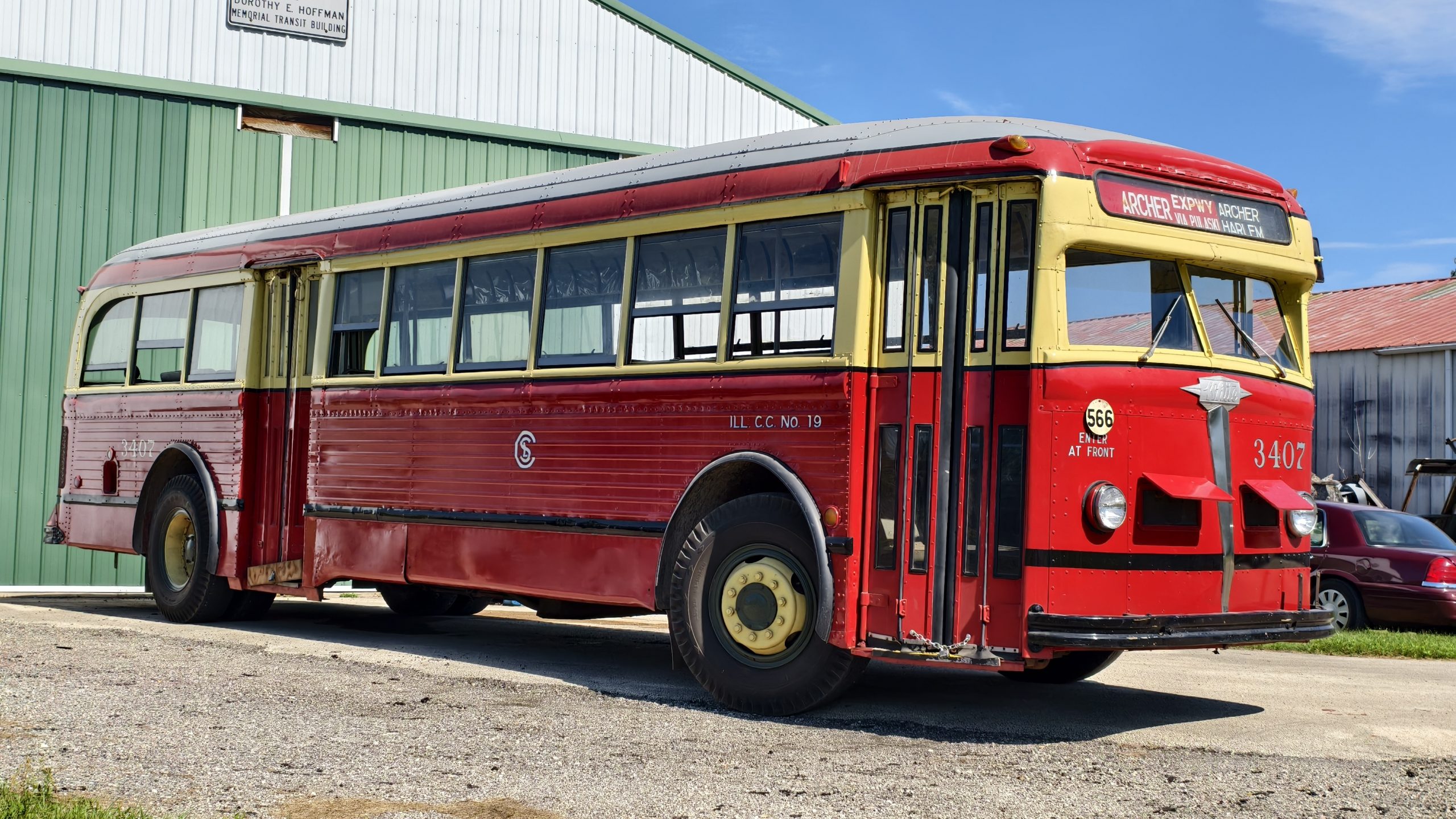 i
i
More than that, this bus is almost the poster child for doing more with less. The bus had no flair, and used so little metal that what little material it used had to be corrugated for strength. Yet, this bus has survived an incredible 81 years, which is considered to be a pretty decent life for a person, forget about a vehicle.
If you want to check out Chicago Surface Lines 3407, you pretty much have to wait until next year. IRM’s operations are beginning to wind down for the rest of the season, and it’s unlikely that the bus barns will be open for you to peek inside. But that’s just a good reason to get amped for next spring!
Top graphic image: Mercedes Streeter
